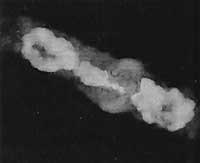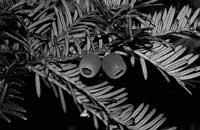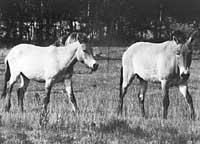The next great achievement?
1997/10/01 Pain, Stepahie Iturria: Elhuyar aldizkaria
It began as a promising new immune suppressor. It is currently sold as a cancer drug that may be better than taxol. The discodermalida is a polyhydroxylated lactone, dissolute Discodermis, isolated from the sponge that inhabits the Caribbean Sea about 200 m deep.
Trials conducted in 1990 showed that discodermalide is very effective in stopping the proliferation of white blood cells in the blood and thus in stopping the body's attacks on the transplanted organ or marrow. But when a more discriminatory compound of a fungus was isolated, interest in discodermalide disappears.
However, at the Harbor Branch Oceanographic Institute in Fort Pierce in Florida, Ross Longley and his colleagues maintained interest in the discodermalid. It was about analyzing how it stops the reproduction of white blood cells. By 1993, it was discovered that the compound does not kill white blood cells, but that when they are about to split, it paralyzes their activity.

Along with Billy Day, of the University of Pittsburgh, and Ernie Hamel, of the National Cancer Institute, Longley went ahead by treating breast cancer cells with discodermalide, showing that they are stopped at a specific point in the fractionation cycle, which occurs after dividing the nucleus in half but before starting to divide the cytoplasm. The chemical interferes with the process that softens the cytoplasm for fragmentation.
Before its fragmentation, the cell needs to destroy the cytoskeleton, a microscopic tube structure formed mainly by tubular proteins. These tubes are broken down before division and reformed into the new formed cell. But Hamel and Day discovered that when there is discodermalide, instead of “melting” normally, the tubes are reformed into rigid batteries. Under a microscope, the change in cells was spectacular, as tube accumulations in the form of a star could be seen without any visible structure. Frozen in time the cell skeleton, the cells remained at that point of the cycle and died after 24 hours.
“This is the same mechanism of influence as taxol,” says Longley. Taxol, a compound that leaves the surface of the Pacific tooth, is an accepted treatment for breast cancer. Only two isolated yeast compounds are known to disrupt cell division by preventing the breakdown of the cytoskeleton.
Pre-clinical studies show that discodermalide is at least as potent as taxol against breast cancer cells and lung cancer cells. The altered Longley says it is eighty times stronger against leukemia cells. A decade ago, when the compound was discovered, the chemicals began to work quickly to get it in the laboratory. These are good news, as there are at least three methods.

Gai honi buruzko eduki gehiago
Elhuyarrek garatutako teknologia






